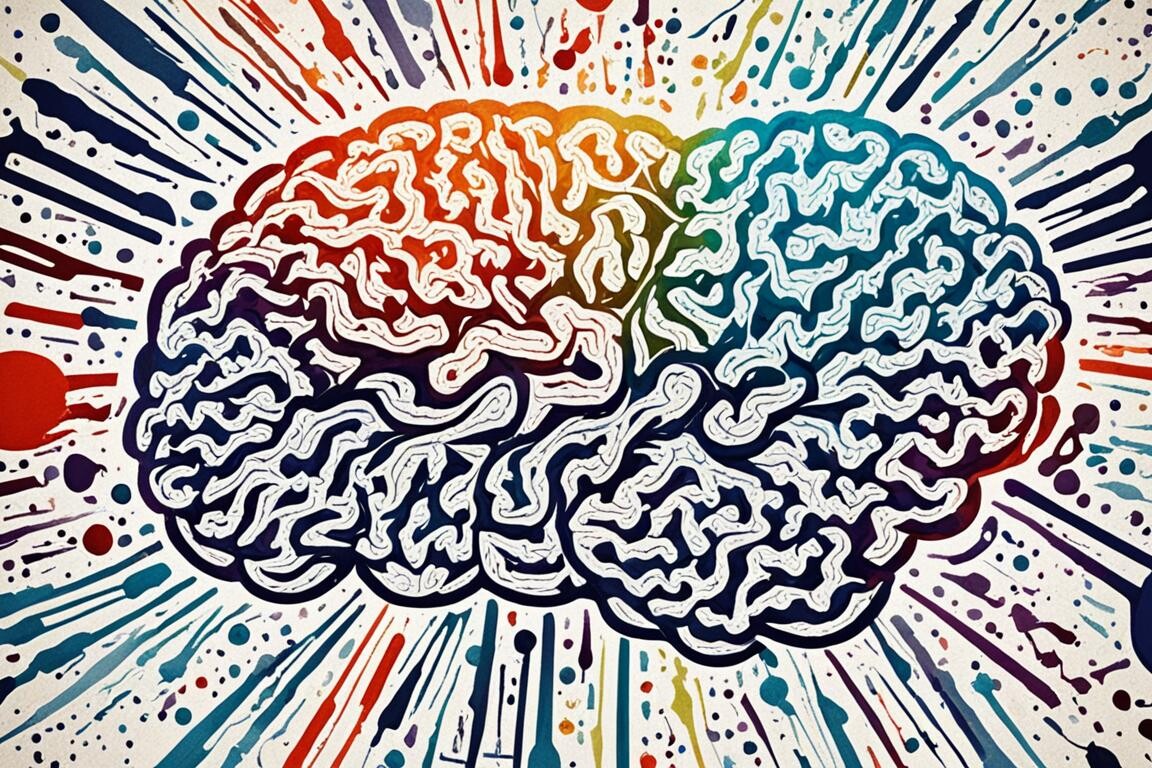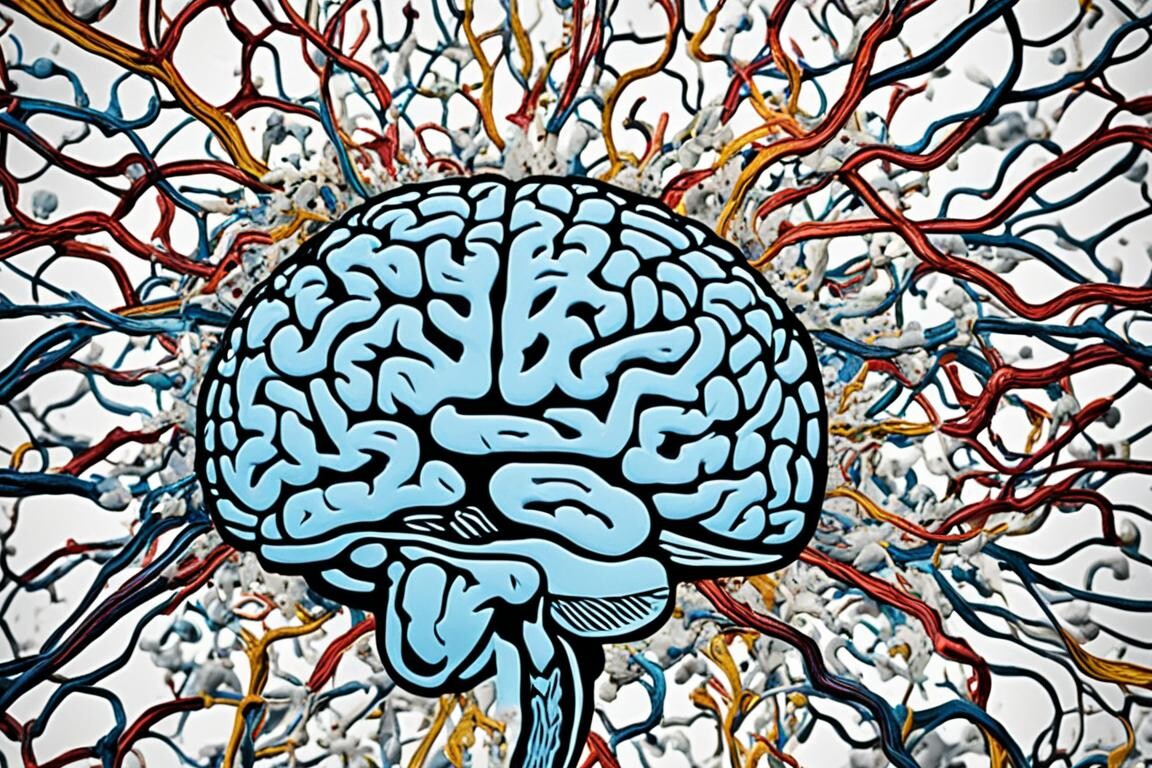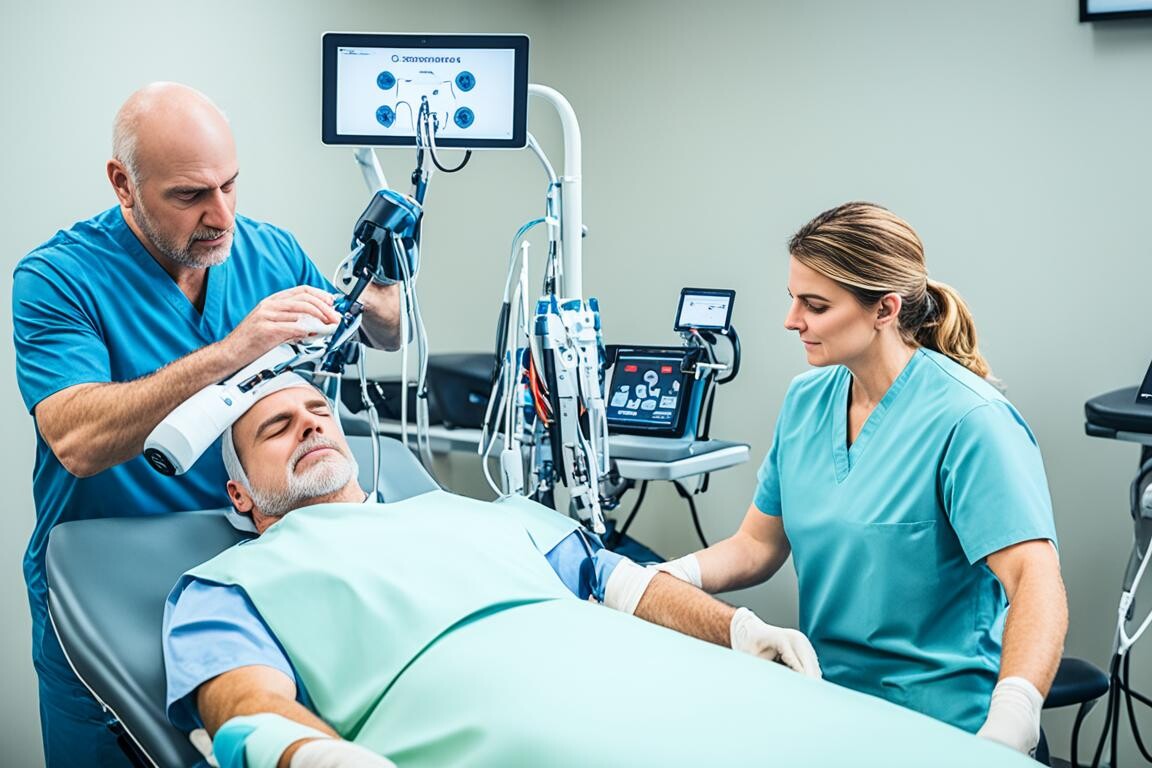Have you ever wondered why some athletes or soldiers suddenly start behaving differently years after their careers? Or why a former football player begins to forget things or become aggressive? These aren’t just random changes. They might be signs of something serious happening inside the brain. This blog breaks down one of the biggest concerns in brain health today: chronic traumatic encephalopathy causes.
In this blog, we will explore what CTE is, how it affects the brain, and the chronic traumatic encephalopathy causes that are raising alarms across sports and military communities.
Table of Contents
ToggleWhat is Chronic Traumatic Encephalopathy?
CTE is a brain disease that slowly worsens over time. It’s often linked with repeated blows to the head. More and more people are learning about it because of stories in the news, especially involving athletes and military veterans.
How does CTE affect the brain?
CTE leads to brain degeneration. This damage is often caused by a buildup of a protein called tau.
- Tau protein forms clumps in the brain
- These clumps kill healthy brain cells
- Over time, thinking, memory, and mood worsen
- Symptoms like anger, confusion, and forgetfulness appear
In early stages, people may have headaches and memory problems. In later stages, the symptoms can look like dementia or post-concussion syndrome.
Why has CTE become more common in recent years?
CTE is not new. But we now know more about it because:
- More media reports and celebrity cases
- Big studies have been done
- Sports leagues are paying attention
Doctors and researchers now link head trauma to long-term brain changes.
Read: 13 Major Day-to-Day Things You Do That Can Damage Your Brain
What Are the Primary Chronic Traumatic Encephalopathy Causes?
Now let’s look closely at the chronic traumatic encephalopathy causes. These include injuries, sports activities, and even military service.
How do repeated head injuries contribute to CTE?
Even small hits to the head can lead to CTE.
- Concussions: big hits that cause clear symptoms
- Subconcussive hits: smaller hits that still damage the brain
- Both can cause brain degeneration over time
- Damage happens slowly, often unnoticed
Boston University studied over 600 brains. They found clear signs of neuropathology in many athletes.
Is there a link between sports and CTE?
Yes, very strong links. Sports with head contact are top sources of CTE.
| Sport | Risk Level | Notable Findings |
|---|---|---|
| NFL Football | Very High | 99% of studied brains showed CTE |
| Boxing | High | Linked to memory loss, aggression |
| Rugby | High | Frequent tackles, head clashes |
| Soccer | Moderate | Heading the ball causes head trauma |
| MMA | High | Strikes to the head are common |
Which Famous Athletes Have Been Linked to CTE?
The following table highlights several well-known athletes from various sports and countries who have either shown symptoms of CTE or were officially diagnosed after death.
These cases emphasize the global concern around chronic traumatic encephalopathy causes and how different types of head trauma may lead to lasting brain damage.
| Name | Profession/Sport | Country | CTE Status |
|---|---|---|---|
| Ken Stabler | NFL Quarterback | USA | Diagnosed posthumously |
| Dave Duerson | NFL Safety | USA | Diagnosed posthumously |
| Bernie Kosar | NFL Quarterback | USA | CTE symptoms, treatment |
| John Mackey | NFL Tight End | USA | Diagnosed posthumously |
| Sugar Ray Robinson | Boxer | USA | Believed to have CTE |
| Heather Anderson | Australian Rules Footballer | Australia | Diagnosed posthumously |
| Billy Guyton | Rugby Player | New Zealand | Diagnosed posthumously |
- Youth sports can also lead to long-term brain damage
- Starting at a young age increases exposure to repeated head trauma and brain disease
Can military service or blast exposure lead to CTE?
Military members face repeated explosions and accidents.
- Blast waves from bombs affect the brain
- Many veterans have traumatic brain injury (TBI)
- Studies by Veterans Affairs show links between TBIs and CTE
- Mental health issues in veterans may be tied to brain damage
Does CTE develop even without diagnosed concussions?
Yes. This is why it’s so dangerous.
- Silent injuries build up over years
- No symptoms doesn’t mean no damage
- Many athletes who never reported a concussion had CTE signs during autopsy
Symptoms of Chronic Traumatic Encephalopathy
Chronic traumatic encephalopathy (CTE) can manifest with a range of symptoms that may vary from person to person. While researchers do not unanimously agree on the specific signs of the disease, there are common symptoms associated with CTE that individuals should be aware of.
- Memory and thinking problems: CTE can lead to difficulties with memory, concentration, and cognitive function. This may manifest as forgetfulness, difficulty making decisions, and impaired problem-solving skills.
- Confusion: Individuals with CTE may experience a sense of confusion or disorientation, particularly in unfamiliar or complex situations.
- Personality changes: CTE can cause significant changes in personality, leading to alterations in mood, behavior, and overall temperament.
- Erratic behavior: Aggression, impulsivity, anger, and irritability are often observed in individuals with CTE. These behavioral changes can impact personal and professional relationships.
- Depression and suicidal thoughts: CTE has been linked to an increased risk of depression and suicidal ideation. These symptoms should always be taken seriously and addressed with professional help.
- Attention and organization problems: Difficulty concentrating, staying focused, and organizing thoughts and tasks are common challenges faced by individuals with CTE.
- Balance and motor skill issues: CTE can affect motor coordination and balance, leading to problems with movements and coordination.
It is important to note that the onset of these symptoms may not occur immediately after the brain injuries but may present years or even decades later. This delayed manifestation can make it challenging for individuals to connect their current symptoms with past traumatic brain injuries.
To provide a visual representation of the symptoms associated with CTE, refer to the table below:
| Symptoms of Chronic Traumatic Encephalopathy |
|---|
| Memory and thinking problems |
| Confusion |
| Personality changes |
| Erratic behavior |
| Depression and suicidal thoughts |
| Attention and organization problems |
| Balance and motor skill issues |
Note: The table above provides a concise visual summary of the common symptoms associated with chronic traumatic encephalopathy.
It is crucial for individuals who have experienced multiple traumatic brain injuries or have been involved in contact sports or military service to be vigilant about their brain health and seek medical attention if they experience any of these symptoms. Early detection and management are key to maximizing quality of life and providing appropriate support.
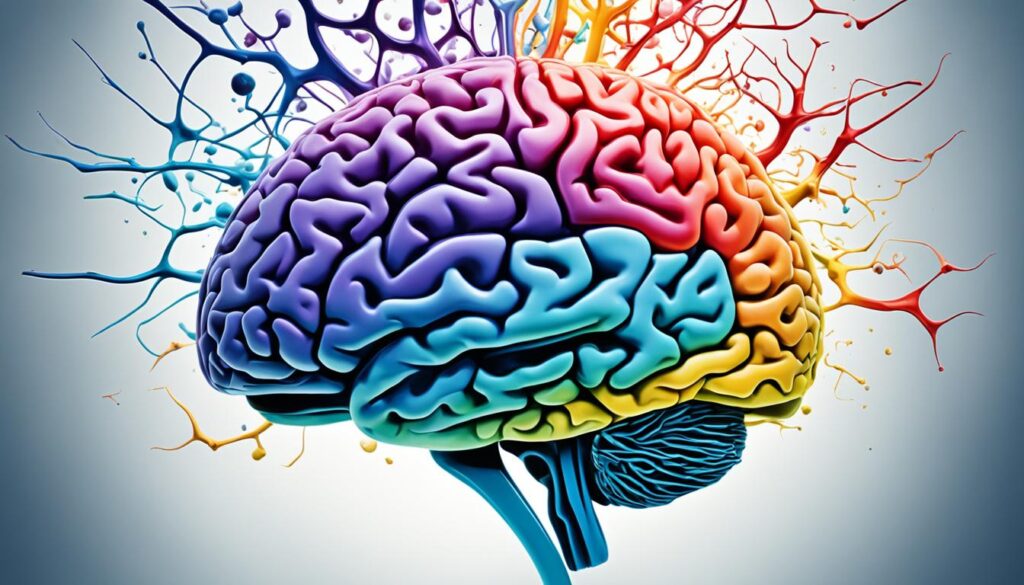
What Lifestyle and Environmental Factors Could Worsen CTE Risk?
Even without many injuries, certain habits or environments can raise the risk of chronic traumatic encephalopathy causes.
Can alcohol or drug use make CTE symptoms worse?
Yes. Brain cells already damaged by trauma are more at risk.
- Alcohol slows brain healing
- Drugs affect thinking and behavior
- CTE patients may use substances to cope, worsening damage
Many athletes with football brain injuries also battled substance use.
How does lack of protective gear or poor coaching increase risk?
Without good protection or training, injuries are more likely.
- Poor helmets don’t absorb shocks well
- Unsafe drills increase hits to the head
- Coaches play a big role in athlete safety
Better gear and smart coaching reduce brain damage from sports injuries.
How is Chronic Traumatic Encephalopathy Diagnosed?
Diagnosing chronic traumatic encephalopathy (CTE) can be challenging, as a definitive diagnosis can only be made after death through a brain examination. However, there are methods available to help identify potential cases and rule out other causes of symptoms while the individual is still alive.
A comprehensive approach is typically adopted, which includes:
- Medical history: Your medical history, including any instances of traumatic brain injuries (TBIs), will be assessed. This information helps the healthcare provider evaluate the potential risk of CTE.
- Mental status testing: Cognitive and psychological tests may be conducted to assess memory, thinking, and behavioral changes. These tests help in identifying the possible symptoms of CTE.
- Neurological exams: Physical evaluations, including neurological exams, can provide valuable insights into motor skills, balance, reflexes, and sensory perception.
- Brain imaging: Advanced imaging techniques, such as MRI or PET scans, may be utilized to detect any abnormalities in the brain structure or function. These scans can help differentiate CTE from other brain disorders.
While these approaches can assist in diagnosing CTE, they cannot provide a definitive confirmation. Currently, researchers are focusing on identifying biomarkers or specific imaging patterns that can aid in the early diagnosis of CTE.
Why is CTE only confirmed after death?
Doctors need to see brain tissue under a microscope.
- No test yet shows CTE in living people
- Symptoms overlap with depression, Alzheimer’s
- Misdiagnosis is common
Families often find out too late.
What advances are being made in CTE detection and research?
New tools are being tested to help spot CTE earlier.
- AI scans may detect early signs
- Blood and spinal fluid tests show promise
- Trials with retired athletes are ongoing
These steps may make early help possible.
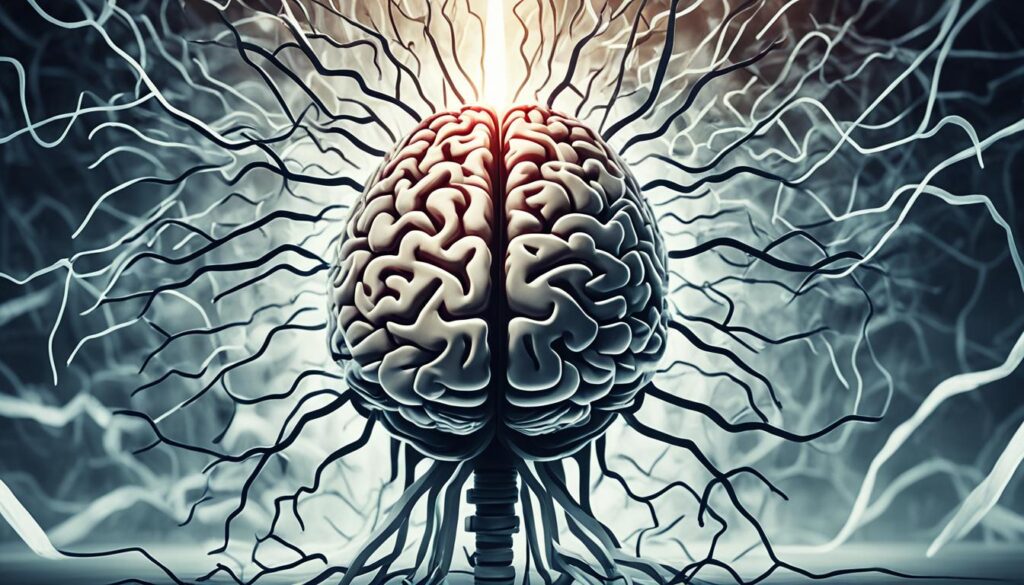
| Diagnosis Methods | Pros | Cons |
|---|---|---|
| Autopsy | – Definitive confirmation of CTE presence | – Requires postmortem examination |
| Medical history | – Helpful in assessing risk factors | – Relies on accurate recollection of past events |
| Mental status testing | – Identifies cognitive and behavioral changes | – Results may vary and are subjective |
| Neurological exams | – Evaluates motor skills and sensory perception | – Findings may be non-specific |
| Brain imaging | – Provides visual insights into brain structure | – Cannot definitively diagnose CTE |
Treatment and Research on Chronic Traumatic Encephalopathy
Currently, there is no cure or specific treatment for chronic traumatic encephalopathy (CTE). However, certain medications may be used to temporarily manage the cognitive and behavioral symptoms associated with the disease. Ongoing research is being conducted by various organizations, such as the National Institute of Neurological Disorders and Stroke (NINDS) and the Brain Injury Research Institute (BIRI), to better understand the causes, risk factors, and progression of CTE. The Alzheimer’s Association has also invested significant funds in research grants to further explore the connection between CTE and dementia.
Medications for Symptom Management
Although there is no cure for CTE, some medications can help alleviate certain symptoms in individuals with the disease. These medications are primarily aimed at managing cognitive impairments, mood disorders, and behavioral changes. Commonly prescribed medications for CTE may include:
- Antidepressants: These medications can be used to address symptoms of depression and anxiety often associated with CTE.
- Mood stabilizers: Mood stabilizing drugs can help regulate mood swings and reduce impulsive behaviors in individuals with CTE.
- Memory enhancers: Some medications may be prescribed to improve memory and cognitive function in individuals with CTE.
It is important to note that while these medications may help manage symptoms, they do not alter the progression of the disease or provide a long-term solution.
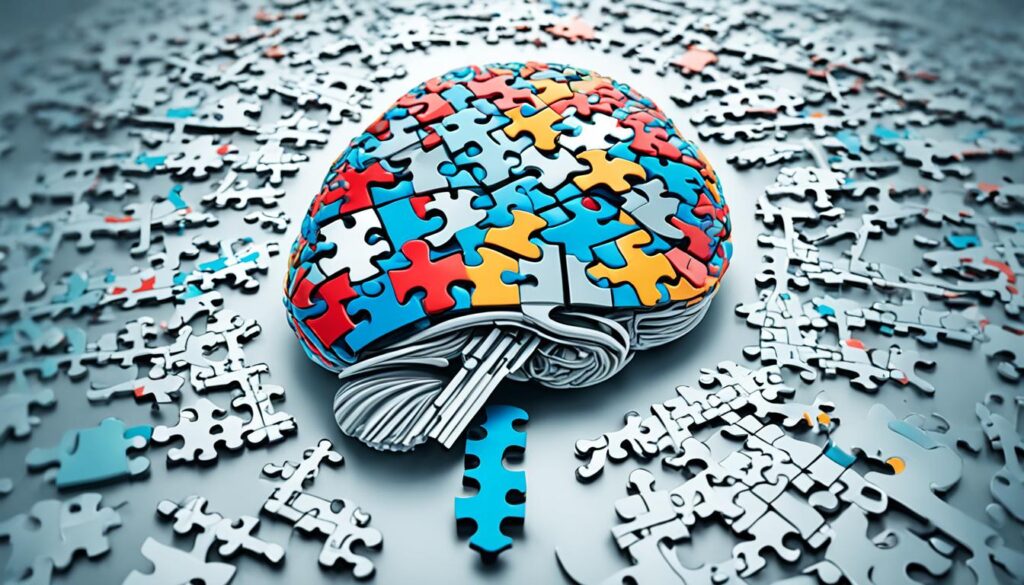
How Can We Prevent or Lower the Risk of CTE?
The best way to stop CTE is to lower chronic traumatic encephalopathy causes. Prevention is key.
What safety protocols should athletes and coaches follow?
Simple rule changes can help.
- No helmet-to-helmet tackles
- Limited headers in youth soccer
- Mandatory time off after concussion
NFL now uses concussion spotters in every game.
Are there emerging therapies or prevention strategies for high-risk groups?
Technology is improving.
- Helmets with better shock absorption
- Wearables that track head impacts
- Real-time data to make fast safety decisions
These tools can reduce harm and catch signs early.
How Dr. Chandril Chugh Can Help You Understand Your Brain Health
If you or someone you care about has a history of head injuries or unexplained mood and memory changes, it’s time to get help. Chronic traumatic encephalopathy causes are serious, but early action can improve life quality.
Dr. Chandril Chugh is a US-trained, board-certified neurologist. He specializes in tough brain conditions like CTE symptoms, stroke, tremors, memory loss, sleep issues, and even pediatric ADHD. With his expert care, you can find answers and get the right plan for your brain health.
Book your consultation with Dr. Chugh today and take the first step toward better brain health.
FAQ
What is chronic traumatic encephalopathy (CTE)?
Chronic traumatic encephalopathy (CTE) is a progressive and fatal brain disease that is associated with repeated traumatic brain injuries (TBIs), including concussions and repeated blows to the head.
Who is at the greatest risk of developing CTE?
Athletes who play contact sports, such as boxers and football players, as well as military veterans, are at the greatest risk of developing CTE due to the increased chances of enduring repeated head trauma.
Is CTE more common in men than women?
Yes, because more men play contact sports and serve in combat. But any person exposed to repeated head trauma is at risk.
What are the symptoms of chronic traumatic encephalopathy?
Symptoms of chronic traumatic encephalopathy can vary from person to person and may include memory and thinking problems, confusion, personality changes, aggression, depression, and even suicidal thoughts. Other potential symptoms include problems with attention, organization, balance, and motor skills.
How is chronic traumatic encephalopathy diagnosed?
Currently, a definitive diagnosis of chronic traumatic encephalopathy can only be made after death through an autopsy that examines the brain for the presence of the characteristic changes associated with CTE. However, while the individual is still alive, a medical history, mental status testing, neurological exams, and brain imaging may be used to help identify potential cases of CTE and rule out other causes of symptoms.
Is there a cure or treatment for chronic traumatic encephalopathy?
Currently, there is no cure or specific treatment for chronic traumatic encephalopathy. However, certain medications may be used to temporarily manage the cognitive and behavioral symptoms associated with the disease. Ongoing research is being conducted to better understand the causes and progression of CTE and to explore potential treatments.
What professions are most at risk for developing CTE?
- Football players
- Boxers
- Military personnel
- MMA fighters
- Rugby players
Source Links
About The Author

This article is medically reviewed by Dr. Chandril Chugh, Board-Certified Neurologist, providing expert insights and reliable health information.
Dr. Chandril Chugh is a U.S.-trained neurologist with over a decade of experience. Known for his compassionate care, he specializes in treating neurological conditions such as migraines, epilepsy, and Parkinson’s disease. Dr. Chugh is highly regarded for his patient-centered approach and dedication to providing personalized care.
→ Book a consultation to discover which remedies suit your needs best.

